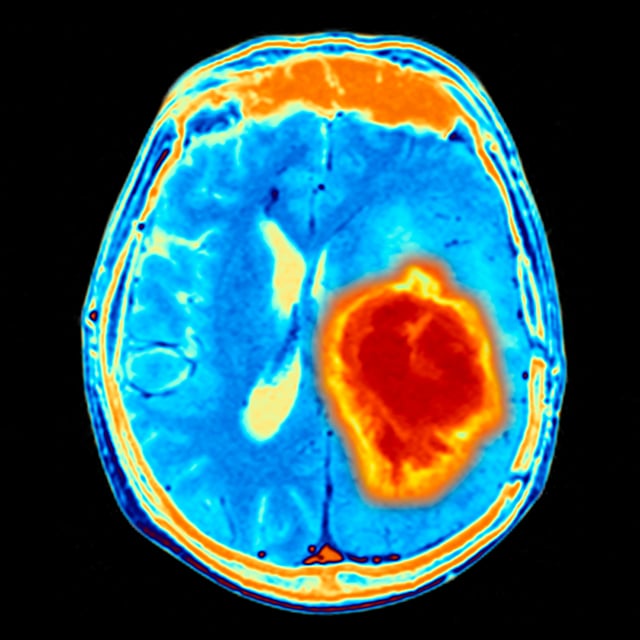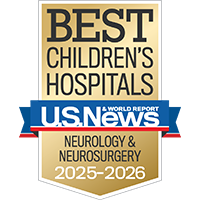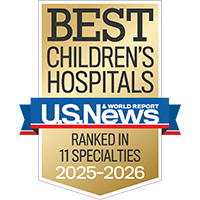Translation, please
We have interpreters for Cantonese, Mandarin, Spanish, Russian, American Sign Language and more.
Request an interpreter

Brainstem glioma is a type of brain and spinal cord tumor. This type of tumor forms when there is a change in healthy cells in the brain and these cells grow uncontrollably, forming a tumor in the brainstem. Some of these tumors are cancerous, some are not.
Brainstem gliomas usually belong to the group of tumors known as astrocytoma, one of the most common types of brain tumor that can develop in children. Astrocytomas arise from a specific type of cell in the brain, called an astrocyte.
These tumors may grow slowly or quickly depending on their grade, an assessment that's determined by what the tumor tissue looks like under the microscope. In general, the lower a tumor's grade, the less aggressive its behavior. Brainstem gliomas can be grade 1, 2, 3 or 4 tumors.
Grade 2 tumors in the brainstem frequently grow much faster than grade 2 tumors in the rest of the brain and can transform into higher-grade tumors. Grade 3 and grade 4 tumors grow very fast, particularly when they are in the brainstem. The reason for the very rapid growth of these tumors in this part of the brain is still unknown.
Because many brainstem tumors are not biopsied, a diagnosis is usually made based on the tumor's appearance on an MRI scan. Most tumors that arise from the brainstem region, other than grade 1 tumors, are considered highly malignant.
Boys and girls are equally affected by pediatric brainstem gliomas, most often between 5 and 10 years of age. Symptoms usually come on quickly, over a period of days or weeks.
Common symptoms of childhood brainstem glioma can include:
Brainstem gliomas are typically diagnosed when symptoms that are related to cranial nerve dysfunction, like double vision and difficulty speaking or swallowing, lead to an imaging study. An MRI of the brain will show a mass within the brainstem. Often, the MRI is all that is needed to diagnose brainstem glioma.
In some cases, the tumor does not look like most brainstem gliomas. When that happens, a neurosurgeon will discuss removing the tumor surgically or, at a minimum, performing a biopsy to look at the tissue for the presence of the disease. A biopsy makes it possible to both confirm the diagnosis and to obtain tumor tissue that may someday aid in treatment decisions.
Surgery alone can often cure grade 1 brainstem gliomas. If surgery cannot remove most of the visible tumor, radiation therapy is very effective.
Unfortunately, the majority of brainstem gliomas are rapidly growing grade 2, 3 or grade 4 tumors. Because the tumor grows directly in the brainstem, in an area called the pons, surgery to remove the tumor is not possible. This area of the brain controls many vital functions, including breathing, heart rate and blood pressure.
If the tumor continues to grow, it can affect those functions. For this reason, treatment is started as quickly as possible. If the treatment does not control tumor growth, problems with breathing, heart rate, blood pressure and other neurologic deficits will eventually develop.
In many cases, initial treatment will control growth of brainstem glioma, often for many months. Unfortunately, these tumors tend to grow back in less than one year. Treatment for tumor regrowth is less effective than the initial treatment and may control tumor growth for only a few months or not at all.
The most effective and most common initial treatment is radiation therapy, typically done over six weeks. In some cases, doctors may add various forms of chemotherapy during or after the radiation or at both times.
Tumor regrowth is typically treated with chemotherapy, using either standard or experimental drugs. If a person receives chemotherapy to control the growth of the tumor, it will be continued for as long as it is effective.
In the U.S., many patients have the option to participate in clinical research studies, both for newly diagnosed brainstem glioma and for brainstem glioma that grow despite initial therapy. Most research studies include new experimental drugs.
UCSF Benioff Children's Hospitals medical specialists have reviewed this information. It is for educational purposes only and is not intended to replace the advice of your child's doctor or other health care provider. We encourage you to discuss any questions or concerns you may have with your child's provider.


One of the nation's best for neurology & neurosurgery

Ranked among the nation's best in 11 specialties
Translation, please
